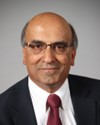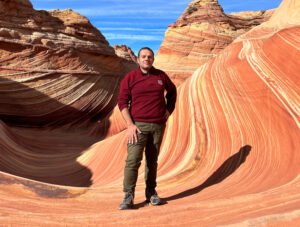United States national security relies upon timely response
to changes in the global environment. An increasing number of nations possess
the ability to inflict significant harm on the U.S., requiring focused
expertise in areas of national security to address these threats.
To achieve resilience and responsiveness within the U.S. national security enterprise requires connection with the powerful thought leadership found in U.S. universities, government, non-governmental organizations, and national laboratories. The Joint Center for Resilient National Security is that connection point of engagement for key contributors in areas of responsibility and strategic interest to the Los Alamos National Laboratory.
The mission of the Joint Center for Resilient National
Security (JCRNS) is to develop and enhance national security capabilities
between U.S. Department of Energy laboratories and U.S. universities supporting
Los Alamos National Laboratory. The JCRNS will accomplish its mission through a
series of programs that will develop over time.
The purpose of JCRNS is the create a cadre of academic
researchers who:
- Are
experts in weapons physics, and have knowledge of weapons complex, and
weapons complex issues.
- Collaborate
with LANL staff on basic research projects having a potential for high
impact on stockpile stewardship.
- Facilitate
the connection of LANL staff to the academic research community.
- Provide
a connection for certain students of academics to LANL and stockpile
stewardship research.
Academics who participate in JCRNS projects
are designated as JCRNS Fellows. Find a full list of Fellows here.
A program to introduce select university faculty annually to
the nuclear security enterprise. Participants are chosen from universities
across the U.S. based on knowledge, skills, abilities, interests and potential
to obtain security clearances. The program includes site visits, presentations,
and discussions. Upon completion, individuals may be designated
as Fellows and assigned to the Joint Research and Development Program
and Academic Working Group Program.
A program of applied research and development executed by
collaborative teams of Los Alamos National Laboratory (LANL) staff, U.S.
university faculty, and staff from other laboratories focused on areas of
strategic importance to the National Nuclear Security Administration. The JRAD
will develop an academic bench of top U.S. university faculty who possess a
deep understanding of national security problems and issues faced by LANL and
other national security labs. These faculty members will serve as resources for
national labs in times of need, and their research programs will produce
graduates well prepared for national lab careers. Research and development
areas will be chosen by the Joint Center for Resilient National Security
leaders and will be aligned with Academic Working Group topics. JCRNS projects
primarily involve Fellows and lab staff, but students of Fellows can be funded
to work on research projects aligned with the JCRNS project. Students serve as
Lab interns during summers. JCRNS Fellows and students are not limited to TAMU
faculty.
The center’s topical areas will evolve as mission needs and
university capabilities develop. Current lab-university collaborations
supporting the LANL mission include:
Radiation-Hydrodynamics, Academic leads: Jim Morel (TAMU),
Dmitriy Anistratov (NC State) Staff leads: Ryan Wollaeger, James Warsa
Neutronics, Academic leads: Anil Prinja (UNM), Jean Ragusa
(TAMU), Staff leads: Patrick O’Rourke, Zachary Hardy
High-Energy Density Physics, Academic leads: Carolyn Kuranz
(U.Mich), Mark Koepke (West Virginia U.), Staff lead: Todd Urbatsch
Energetic Materials and Shock Physics, Academic Leads: Scott Jackson (TAMU), Jacob McFarland (TAMU), Staff Leads: Carlos Chiquete and Johnathan Regele
Relativistically-Correct Multifrequency IMC, Jim Morel (TAMU,
Ryan Wollaeger (LANL).
Second-Moment, High-Order/Low-Order Methods for Radiation
Transport, Dmitriy Anistratov (NCSU), Jim Morel (TAMU), James Warsa (LANL),
Ryosuke Parks (LANL).
• Neutronics:
Improved Theory and Experiments for Stochastic Neutron
Transport, Anil Prinja (UNM) and Patrick O’Rourke (LANL).
NDSE Diagnostic Improvements, Jean Ragusa (TAMU), Zachary
Hardy (LANL),
• High-Energy Density Physics
Radiation Transport Validation Experiments for Stochastic
Media, Carolyn Kuranz (U.Mich), Mark Koepke (West Virgina U.), Todd Urbatsch
(LANL).
An Experimental Environment for A-B Experiments on the
Z-Machine (Opposition Research) Carolyn Kuranz (U.Mich), Mark Koepke (West
Virgina U.), and Todd Urbatsch (LANL).
• Energetic Materials and Shock Physics:
Separating the Effects of Plastic Flow Stress and Explosive
Drive at Ultra-High Strain Rates, Scott Jackson (TAMU) and Carlos Chiquete
(LANL).
Secondary Breakup of Reactive Metal Ejecta Particles:
Modeling Aero- Mechanical Mechanisms, Jacob McFarland (TAMU) Jonathan Regele
(LANL).
A program to provide forums for deep exploration into key topics and problems related to LANL national security missions. Similar to Joint Working Groups that have provided forums for multi-lab explorations for many decades, AWOG meetings may include unclassified sessions, classified sessions, or both. AWOG problems will be chosen by Joint Center for Resilient National Security leaders and will be aligned with Joint Research and Development Program topical areas.
We have held JAWOG meetings since Fall
2021. Our next JAWOG meeting is scheduled for early December 2025.
Three days are devoted to the topical
research areas.
All JAWOG meetings take place at TAMU with the Fellows and LANL staff leaders attending in person. Other LANL participants attended via VTC. Some LLNL staff have also participated in JAWOG meetings.
Possible New Initiatives
We are exploring the delivery of graduate-level courses on
various technical subjects, to new LANL staff. These courses will require
formal homework and exams. They need not count for academic credit but would be
eligible for such credit.
We are currently planning to introduce new projects in
hypersonics as well as high explosives and energetic materials.
Contact
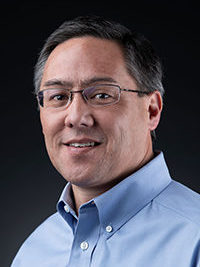
John M. Scott
Los Alamos National Laboratory
[email protected]
Phone: 505-665-2542
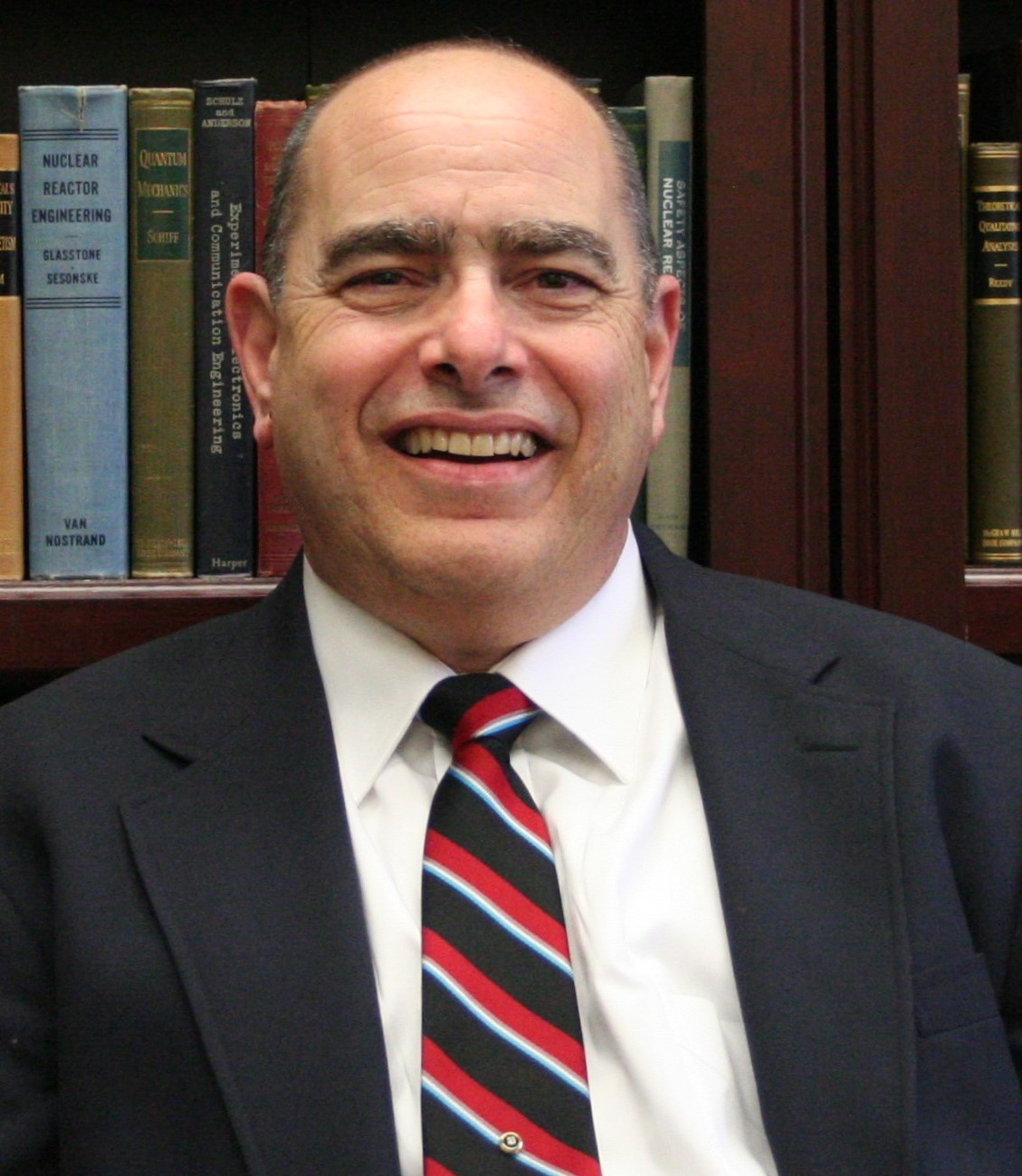
Jim E. Morel
Texas A&M University
[email protected]
Phone: 979-845-6072
JCRNS Fellows
Marvin Adams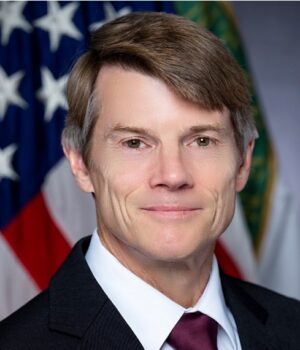
Dr. Adams began his nuclear career in 1977 as an engineering aide at the Sequoyah Nuclear Plant near Chattanooga, TN. He has spent most of his career since 1986 engaged in a variety of roles related to national and international security. His most recent major role was as the Deputy Administrator for Defense Programs at the National Nuclear Security Administration (NNSA), where he was responsible for programs that perform the design, manufacture, certification, transportation, maintenance, assessment, and dismantlement of U.S. nuclear weapons and for working with other government agencies on policy and force structure decisions related to the U.S. nuclear deterrent. Prior to his Senate confirmation as Deputy Administrator, Dr. Adams served on the President’s Council of Advisors on Science and Technology; the Stockpile Assessment Team of the Strategic Advisory Group for U.S. Strategic Command; the JASON defense advisory group; the National Academies’ Committee on International Security and Arms Control; the Predictive Science Panel for the Lawrence Livermore and Los Alamos National Laboratories (LLNL and LANL); the Mission Committee for LANL; the Predictive Engineering Sciences Panel at Sandia National Laboratories, and many other review and advisory bodies related to national security. Dr. Adams spent more than five years as a physicist in the weapons program at LLNL and 30 years as Professor of Nuclear Engineering at Texas A&M University before serving as NNSA Deputy Administrator, and he has returned to the Texas A&M University System as a Senior Advisor in the Nuclear Security Office. Dr. Adams earned his Ph.D. and M.S. degrees in nuclear engineering from the University of Michigan and his B.S. degree in nuclear engineering from Mississippi State University.
Dmitriy Anistratov
Dr. Dmitriy Anistratov is a Professor of Nuclear Engineering at NC State University. He works in the field of computational physics, transport theory and numerical analysis. His interests involve mathematical models of particle transport in various physical systems and numerical methods for solving this class of physical problems. His research includes development of computational methods for solving the Boltzmann equation, discretization schemes for partial differential equations, iteration methods, multiscale and multilevel methods for multiphysics problems, methods for reduction of dimensionality, reduced-order models for particle transport problems, homogenization methods, asymptotic analysis, hybrid stochastic/deterministic methods. He has experience in developing computational methods for problems of high-energy-density physics and reactor physics.
Since 2022, D. Anistratov is a Guest Scientist at Los Alamos National Laboratory (LANL) in Computational Physics Group (CCS-2) of Computer, Computational, and Statistical Sciences Division. Previously, he was a research scientist at Keldysh Institute for Applied Mathematics, USSR Academy of Sciences (1985-1990) and Institute for Mathematical Modeling, Russian Academy of Sciences (1990-1996), Visiting Assistant Professor at the Department of Nuclear Engineering at Texas A&M University (1995-2000). He has degrees in Physics (MS – Moscow Institute of Physics and Technology, 1985) and Physical and Mathematical Sciences (PhD, Russian Academy of Sciences, 1993).
Marcia Cooper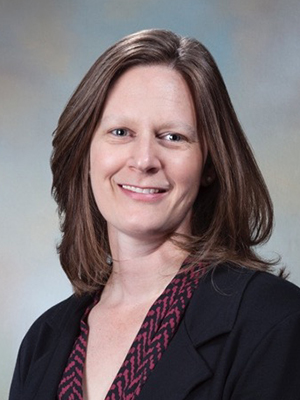
Associate Professor, Texas A&M University, Mechanical Engineering
The Cooper Research Group studies the dynamic response and behaviors of materials in severe environments. Of particular interest are heterogeneous materials formed from densely packed granular media which are found in a diverse range of applications including structural materials, energy storage, pharmaceuticals, and energetic materials including pyrotechnics, propellants, and explosives. Our experiments and analysis combine aspects of shock physics, mechanics of materials, material science, thermal science, and combustion to uncover the effect of thermal and mechanical damage mechanisms on bulk material performance.
 Scott Jackson
Scott Jackson
Scott’s research primarily focuses on the detonation physics of gaseous and condensed-phase explosives with the intent to provide improved models and novel measurements of shock and detonation processes. Scott is also on the board of directors and leadership team for IDERS, the Institute for Dynamics of Explosions and Reactive Systems, which is an international group that organizes the ICDERS conference and is interested in the scientific study of the non-steady coupling that occurs between the fluid flow system and the exothermic reactions associated with high-speed combustion.
 Mark Koepke
Mark Koepke
Mark Koepke and his research group started and established the curriculum and research program in Plasma Physics at WVU. Professor Koepke’s research involves discovery plasma science (wave-particle interactions, wave-wave coupling, oscillating instabilities, turbulence-induced transport of particles and energy, dynamical complexity), space-related lab experiments, dusty and partially ionized plasmas, driven-oscillator spatiotemporal phenomena, and diagnostic development. Amplitude-dependent stability, multiple equilibria, and inter-dependence between amplitude and frequency of oscillation are examples of dynamic complexity that can appear when the relation between cause and effect is not linear, the coefficients in the pertinent differential equations are functions of the dependent variable, and the principle of superposition is invalid.
In the past two years, Prof. Koepke’s research group published papers on Applicability of bispectral analysis to causality determination within and between ensembles of unstable plasma waves; Energetic electron diffusion during controlled magnetic-island bifurcation; Energetic electron transport in magnetic fields with island chains and stochastic regions; Time-resolved biphase signatures of quadratic nonlinearity observed in coupled Alfvén eigenmodes on the DIII-D tokamak; An integrated, open-source framework for polyspectral analysis; Instantaneous difference-frequency-locking observed during toroidicity-induced Alfven eigenmode coupling in the DIII-D tokamak; Structure and dynamics of magneto-inertial, differentially rotating laboratory plasmas; understanding of- and developing plasma physics models for- particle density profiles in stellarators; and Intensity, duration and motion of auroral arcs.
 Carolyn Kuranz
Carolyn Kuranz
Carolyn Kuranz received her AB in Physics from Bryn Mawr College and a PhD in Applied Physics from the University of Michigan, where her graduate research focused on hydrodynamic instability experiments in the high-energy-density regime at the Omega Laser Facility. Following her PhD, she conducted research on uncertainty quantification in radiative shock experiments and simulations as part of the Center for Radiative Shock Hydrodynamics, which was part of the Predictive Science Academic Alliance Program. In 2009, she led one of the first academic campaigns at the National Ignition Facility exploring the effects of radiation on hydrodynamic instability growth relevant to red supergiant, core-collapse supernovae. Currently, Kuranz is a Professor in the Department of Nuclear Engineering and Radiological Sciences and the Faculty Advisor for the Engineering Physics Program at the University of Michigan. She is the Director of the Center for High Energy Density Laboratory Astrophysics Research, an NNSA Center of Excellence, and the Director of Education and Outreach for the ZEUS Laser Facility. Her research focuses on astrophysically relevant high energy density physics, using a combination of theory, computation, and experiment, with specific interest in magnetohydrodynamics, complex hydrodynamics, and radiation hydrodynamics. She has been a primary investigator on grants from the NNSA, National Science Foundation, Office of Science Fusion Energy Sciences, and Department of Defense, and has authored over 145 papers on plasma science resulting in an h-index of 34. She has led and participated in experiments at various facilities around the world, including the NIF, Omega Laser Facility, Z facility, ORION, BELLA Facility, Jupiter Laser Facility, MAIZE, LULI, and the Big Red Ball. Kuranz has also served the plasma physics community in various leadership positions, including as the inaugural chair of the Jupiter Laser Facility, a member of the Executive Committee of the Omega Laser User Group, and member of the Fusion Energy Sciences Advisory Committee and the Chair Elect of the Division of Plasma Physics in the American Physical Society. In 2019, she became a Fellow of the American Physical Society.
 Don Lipkin
Don Lipkin
Don M. Lipkin is Professor of Materials Science and Engineering at Texas A&M University, with a courtesy appointment in Aerospace Engineering. He earned his Ph.D. in Materials from UC Santa Barbara and a B.S. in Materials Science from Northwestern University. Lipkin brings over 30 years of experience developing materials that perform in extreme thermochemical environments and is internationally recognized for his work on thermal and environmental barrier coatings (TBCs and EBCs).
Dr. Lipkin’s current research focuses on designing, manufacturing and testing structural materials for high-temperature, harsh-environment applications such as aero and power-generation turbines and hypersonic systems. To understand and improve durability under extreme conditions, his group combines alloy design strategies with advanced synthesis techniques, high-temperature physical property measurements, and high-enthalpy/high-heat-flux testing.
Prior to joining Texas A&M, Dr. Lipkin spent 27 years at GE Research, where he led multidisciplinary programs on coatings and structural materials. He directed the development and flight transition of EBCs for ceramic matrix composites and helped establish coating strategies across GE’s Aerospace and Power businesses. He authored influential studies on TBC phase stability and thermally grown oxides (TGOs), holds more than 50 U.S. patents, and received the 2019 TMS Application to Practice Award. In 2025, he was elected to the National Academy of Engineering and the Texas Academy of Medicine, Engineering, Science and Technology.
 Jacob McFarland
Jacob McFarland
Jacob McFarland is an associate professor in the J. Mike Walker Department of Mechanical Engineering at Texas A&M University. He has worked with Lawrence Livermore, and Los Alamos National Laboratories, as well as with the Air Force Research Laboratory and Naval Research Laboratory on shock-driven multiphase flow modeling. He received an NSF CAREER award in 2019 for his work on shock-driven multiphase instabilities and a Young Investigator Award from the ONR in 2020 to study droplet breakup in multiphase detonations. His current research interests are in shock-driven multiphase mixing, droplet breakup, multiphase detonations, and ejecta reaction modeling.
Jim Morel
Jim Morel received a B.S. in mathematics and an M.S. in Nuclear Engineering from Louisiana State University. He began his career at the Air Force Weapons Laboratory in 1974, became a technical staff member at Sandia National Laboratories in 1976, and completed a Ph.D. in nuclear engineering from the University of New Mexico in 1979. He was a technical staff member, team leader, and group leader at Los Alamos National Laboratory from 1984 to 2005. In 2005 he accepted a professorship in nuclear engineering at Texas A&M University. He has published 128 journal articles and 95 refereed conference papers relating to numerical methods for neutral and charged-particle transport, radiative transfer, and radiation-hydrodynamics in the High Energy Density Laboratory Physics regime. Many of the methods he has developed are routinely used in codes at the NNSA laboratories.
Anil Prinja
Professor Anil K. Prinja is currently Distinguished Professor Emeritus in the Department of Nuclear Engineering at the University of New Mexico, where he served as the inaugural Department Chair (2014 – 2019), and Senior Research Professor in the School of Nuclear Science and Engineering at Oregon State University. He obtained his B.Sc. (1976) and Ph.D. (1980) in Nuclear Engineering from Queen Mary College, University of London, UK. He held Postdoctoral and Research Associate positions (1980 – 1987) in Nuclear Engineering at University of California Los Angeles prior to joining UNM as Assistant Professor (1987).
Professor Prinja’s research interests include: Applying Markov-chain branching process theory to phase-space evolution of random particle (neutrons, photons, charged particles) populations in nuclear security and nuclear safeguards settings; developing generalized Master equation and closure models for radiation transport in immiscible and miscible non-Markovian stochastic material mixtures with ICF and nuclear security applications; developing moment-preserving reduced-order physics models for high energy charged particle transport with application to space radiation effects.
Dr. Prinja’s Honors and Awards include Fellow of the American Nuclear Society (2003), the American Nuclear Society Gerald C. Pomraning Award (2015), a 2009 NNSA Defense Programs Award of Excellence, the UNM School of Engineering Dr. Glen Whan Memorial Award (2020), and the UNM School of Engineering Senior Faculty Teaching Excellence Award (2003).
Jean C. Ragusa
Jean C. Ragusa is a Full Professor in the Department of Nuclear Engineering at Texas A&M University (TAMU) and a Fellow of the American Nuclear Society (ANS). He earned his Ph.D. in Energetics Physics, with a specialization in Nuclear Engineering, from the Grenoble Polytechnic Institute (INPG) in France in 2001. Since joining Texas A&M in 2004, he has also served as Associate Director of the university-wide Institute for Scientific Computation (ISC) since 2009. Prof. Ragusa’s research expertise lies in high-fidelity computational methods for radiation transport, reactor multiphysics, uncertainty quantification, and data assimilation. His work spans deterministic transport solvers, model-order reduction, digital twinning, and scientific machine learning, with a focus on enabling large-scale, high-performance simulations for nuclear energy and nuclear security. He plays a leading role in the development of OpenSn, a massively parallel deterministic transport code. Prof. Ragusa has been a Guest Scientist at Los Alamos National Laboratory (LANL) since 2022 and is affiliated with the LANL–TAMU Joint Center for Resilient National Security. He also holds a Joint Appointment with Idaho National Laboratory (INL) since 2024.
Over the course of his career, he has advised and graduated 19 Ph.D. and 29 M.S. students, and has taught more than 1,200 undergraduate students. He has been directly responsible for over $10 million in research funding. He has published 77 refereed journal articles and more than 120 peer-reviewed conference papers and summaries. He recently completed terms as Vice-Chair and Chair of the ANS Mathematics and Computation Division.

 Jacob McFarland
Jacob McFarland
